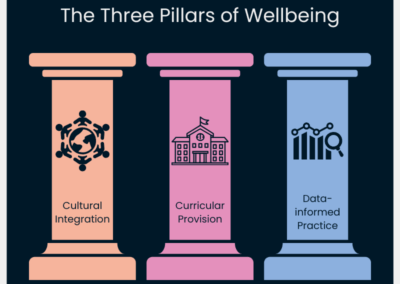ISC Research’s most recent international schools market data tells an undeniable story of growth. In the past five years, international school numbers have increased by 8% to reach a total of 14,833 schools, and enrolment has grown by 13% to over 7.4 million international school students today. This growth is supported by over 700,000 staff members and generates a total annual fee income of $67.3 billion USD.
Yet this same growth brings both opportunity and pressure, as schools strive to keep pace with a rapidly evolving market. In some cities, waiting lists continue to grow, while in others, student enrolment has stagnated. At the same time, a global teacher shortage is widely reported, even as schools seek both new and experienced staff to respond to evolving parental expectations.
In this shifting landscape, relationships – with external organisations, parents as engaged stakeholders, and among staff – are emerging as a key factor in maintaining market competitiveness. In this article, we explore three common challenges faced by international schools worldwide, and how building meaningful relationships can help address them.
Market Saturation and Brand Expansion
Independent schools from the UK, US, Australia, and Canada are progressively establishing overseas campuses. Growing international school demand in Asia and Africa offers both financial opportunity and a platform for strengthening brand reputation. Prominent future openings include Harrow International School campuses in the UAE, Qatar, and Oman, Wellington College International Busan, and Bedford School Mohali.
This trend is intensifying competitive pressures and prompting established schools to reposition themselves to remain relevant; across the sector, parents are placing heavy emphasis on proven academic excellence and school reputation. Building strategic relationships is crucial to this repositioning, which is why 38% of international schools are now members of a school group – an increase of over 10% since January 2020.
School group partnerships enable schools to access operational expertise, enrich student offerings, and communicate a trusted, recognisable brand identity to families. In increasingly saturated markets, it is the strength of institutional relationships and strategic brand alliances that will position schools as market leaders.
Teacher Recruitment and Retention
The United Nations global teacher shortage alert reflects a persistent challenge among international schools: attracting and retaining skilled staff. In Thailand and Vietnam, strict certification requirements create complexities for international teacher hiring. In South Africa, stringent expatriate visa requirements are designed to incentivise local recruitment, which has left schools to compete for a limited pool of trained local professionals.
Even when recruitment succeeds, retention remains a significant concern. In ISC Research’s Teacher Movement Survey 2024, 78% of international school teachers planning to leave their current role cited career development reasons. Notably, while salary topped the list of expectations when teachers entered their role, it was rarely mentioned as a reason for leaving. Salary, then, may attract teachers, but it is not enough to retain them long-term. Teachers need to feel a sense of belonging – where leadership actively invests in their professional growth and overall wellbeing.
Retention therefore hinges on strong professional relationships: schools leaders need to understand individual staff values, offer tailored CPD opportunities, and foster an inclusive workplace where teachers feel supported in their long-term aspirations.
Shifting Student Demographics
International schools are educating increasingly diverse student demographics, particularly in countries with strong economies serving as expatriate hubs. Concurrently, the proportion of local enrolments is rising due to the appeal of English-medium instruction, broader tuition fee brackets, and pathways to global higher education. Over the past decade, enrolments have grown by 45%, with local students now outnumbering expatriates in some markets.
This demographic shift calls for more than academic excellence. Schools must provide personalised learning and foster a holistic environment where every student, regardless of background or home language, can access the curriculum. This means embedding cultural inclusion and language scaffolding across every layer of school life, from classroom practices and school policies to engaging the whole-school community of staff, students, and parents.
Parent support is a vital and often overlooked component to student language development. Schools like the International School of Estonia exemplify how strong home-school relationships – built through translated resources, workshops, and ongoing communications – empower families to become active supporters of their child’s linguistic journey. This partnership not only boosts students’ confidence and academic progress but also strengthens trust within the wider school community.
Fostering Relationships for International Success
Taking place over two days in July, the ISC Research Annual Conference 2025 brings together school leaders, researchers, and education suppliers to explore what it takes to build and sustain relationships that matter.
On Day One, sessions will explore strategic partnerships through the lens of market trends, case studies, and shared challenges. We’ll hear how schools and suppliers can work together to improve outcomes in areas like inclusion, leadership development, and curriculum delivery.
On Day Two, we go deeper, with insight-rich sessions on the future of international education, emerging markets, sustainability goals, and the design of future campuses. It is a day for clients to connect directly with our Field Research Team, and for new conversations to begin.
Secure your place today: ISC Research Annual Conference 2025.



